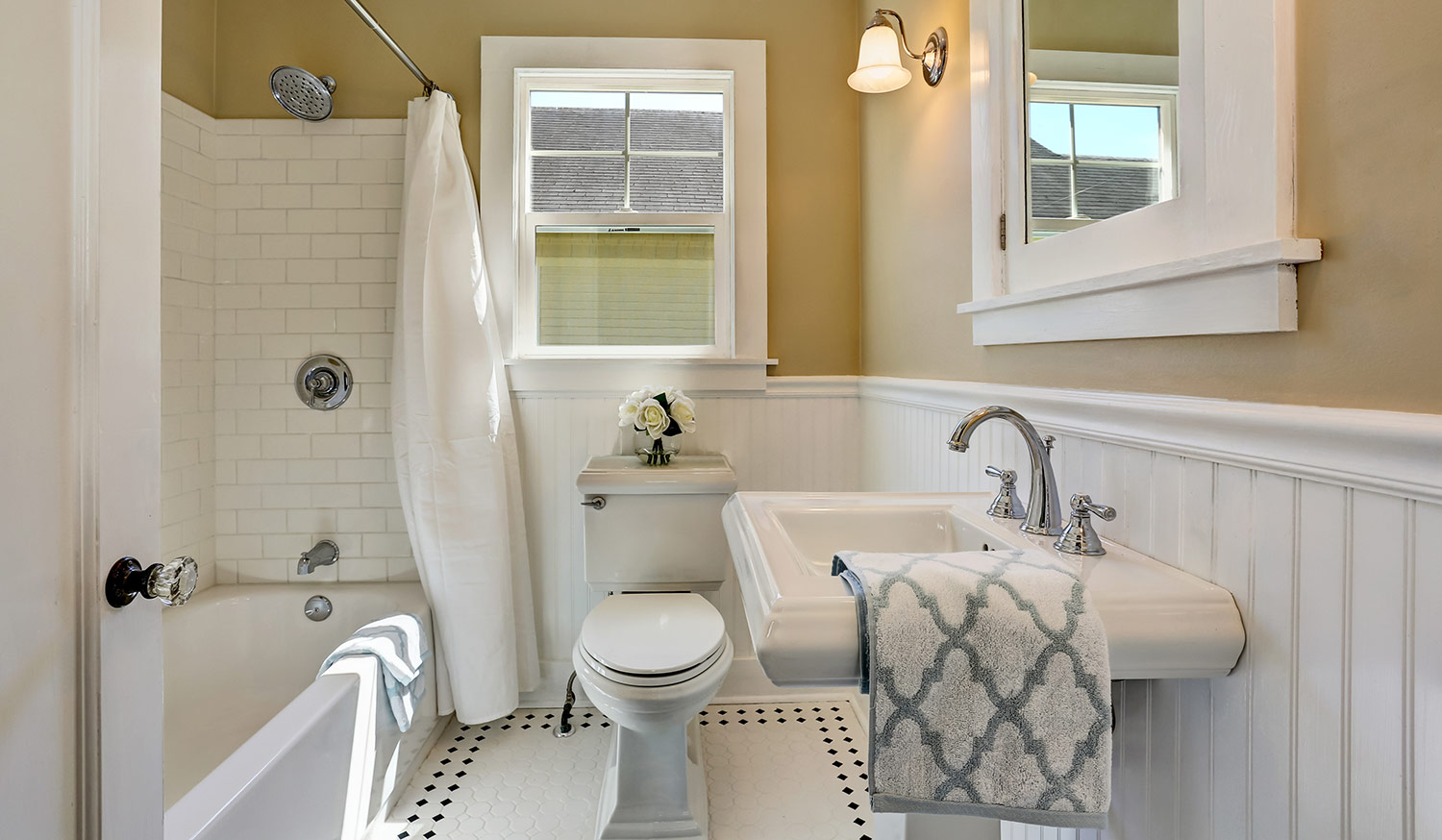Everything You Need to Know About a Toilet Flange
A toilet flange connects your toilet to the drain pipe and keeps the appliance secured to the floor


If you haven’t entertained dreams of being a plumber, or you’re not the handy type compelled to understand the mechanics of all your home devices, you have probably learned everything you know about your toilet. In such a context, the toilet flange, situated between the base of the toilet and the floor, can easily escape notice.
The toilet flange—sometimes called a closet flange—is a pipe fitting that serves two functions: It secures your toilet in place to the floor, and connects it to the drainpipe that carries its contents to the sewer. At 2 or 3 inches in diameter, depending on the size of your pipe, the flange is sealed tight to the drain by a rubber gasket and a wax ring and bolted to the floor, in turn allowing the toilet to be bolted to the flange.
Types of Toilet Flanges
Flanges are made with a variety of different materials, each with its own benefits:
Copper: Copper flanges come in both soft and rigid varieties. The material lasts a long time and resists corrosion. It’s also biostatic, which means it’s not susceptible to accumulating bacteria, viruses, or fungi.
Brass: Like copper, brass is not liable to corrode or host unwanted organic matter, with the additional benefit of heat resistance. The downside is that, as a heavy metal, it will oxidize if exposed to air.
PVC: PVC is the most common and least expensive material for toilet flanges. It’s lightweight, strong, long-lasting, and cannot rust.
ABS: Another plastic toilet flange option is ABS. It shares many of the same advantages as PVC, but offers higher durability in exchange for a higher price.
Stainless steel: Stainless steel toilet flanges neither rust nor corrode while providing the tightest possible seal. Typically, only the piece that fits the wax ring is steel, while the rest of the fitting is made of copper, plastic, or cast iron.
Cast iron: If—and only if—you’ve got cast iron pipes, you can opt for a cast iron flange. The shape is different from flanges of other material, coming with a pipe extension that fits further into the drain.
Aluminum: As with stainless steel, usually the only part of an aluminum flange that’s actually aluminum is the ring for the wax piece. It’s lightweight, durable, and corrosion-resistant.
Toilet flanges come in three standard shapes. The regular model is designed to be fitted into and on top of the drain pipe. Deep seal flanges extend further into the pipe, typically 12 inches. Offset flanges include an elbow that allows the piece to be fitted and adjusted in bathrooms where the pipe is close to the wall or otherwise unusually situated.
Common Toilet Flange Problems

Beyond the basic virtue of understanding how your toilet works, it’s important to know what the flange is—because it can be the source of big problems in your bathroom.
Common symptoms of an improperly functioning toilet flange include:
A toilet bowl that wobbles or seems loose when you use it
Otherwise unexplained leakage toward the bottom of the toilet
An unpleasant smell
If your toilet is backed up, it’s likely there’s a clog in the flange itself. You may be able to unclog the toilet using an auger, provided it’s long enough. But if not it’s time to call a local plumber.
If you have recently installed a new toilet or redone the flooring in your bathroom, the issue is likely that the flange is too long or too short to remain flush to the floor, requiring that you either add a flange extender or cut the pipe.
Otherwise, if water is pooling, the source is most likely a loose wax ring, which can be replaced on its own, or a cracked or broken flange, which means you’ll have to install a new one. The average cost of replacing a toilet flange runs between $145 and $165 if you’re hiring a plumber to do the job, or between $7 and $20 to purchase the materials.
Can I Repair or Replace a Broken Toilet Flange Myself?
Replacing a wax ring or a whole flange is a fairly straightforward DIY job for anyone who can closely follow instructions, in theory at least. The mechanics of the toilet are not particularly complex, and replacing a toilet flange yourself doesn’t require unusual tools to remove or install.
Nevertheless, in most cases, it will be safest and easiest to bring in a local toilet installer or specialist. Toilets are heavy and cumbersome—up to 120 pounds—and it can be difficult for one person to move it alone. Until you’ve moved the toilet out of the way, you won’t know precisely what the problem is, and if it turns out your drainpipe is broken, you may be facing the necessity of cutting through floorboards or breaking concrete to fix it. Additionally, a flange that has been leaking for a while is likely to have created other problems for your toilet and your floor that you may not be prepared to handle yourself.





- Gas Plumbers
- Plumbing Repairs
- Sump Pump Installation
- Wood & Pellet Stove Repair
- Shower Repair
- Wood Stove Services
- Emergency Plumbers
- Fire Sprinkler Contractors
- Perc Test Companies
- Toilet Repair & Installation
- Boiler Repair
- Sewer Line Repair
- Faucet Repair
- Main Drain Camera Companies
- Foundation Drain Installation
- French Drains
- Bathtub Replacement
- Subcontractors
- Storm Drain Contractors
- Affordable Plumbing
- Plumbing & Heating Companies
- Bathroom Repair Services
- Sink Installation
- Commercial Plumber
- Barndominium Builders
- Water Line Repair
- Faucet Installation
- Water Line Installation
- Leak Detection















